Table of Contents
The subject of grinding media (grinding balls & grinding rods) is still controversial. The following information is general and based upon facts gathered from many operations.
General statements can be made and are worthy of consideration when selecting grinding media. For the best results it has been found that the smallest diameter ball or rod which will break down the particular material to be ground is desirable since greatest surface area is obtained. From the standpoint of economy, the larger the media the higher will be the liner consumption and media consumption. The minimum size of grinding balls should be selected with caution since there will be a tendency for such balls to float out of the mill in a dense pulp (this is minimised by the use of a grate discharge mill). Also the smaller the media the quicker it will reach its reject size.
For the first stage of grinding, media will generally be in the 4″ to 2″ size (in some cases as high as 5″). In secondary finer grinding the initial charge will begin at around 3″ and in the case of balls will grade down to about ¾”. Extremely fine grinding will dictate the use of 1½” and smaller balls.
Grinding media is the working part of a mill. It will consume power whether it is doing grinding work or not. The amount of work which it does depends upon its size, its material, its construction and the quantity involved. It is, therefore, advantageous to select the type of grinding media which will prove most economical, the size of media which will give the best grinding results, and the quantity of media which will just produce the grind required.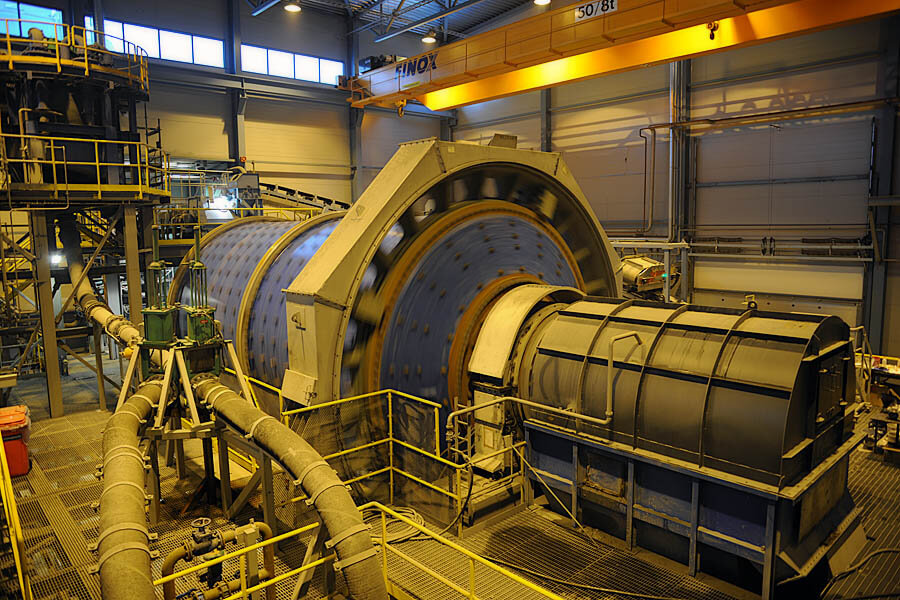
One of the economic factors of grinding is the wear of the grinding media. This is dependent upon the material used in its manufacture, method of manufacture, size of media, diameter of mill, speed of mill, pulp level maintained in the mill, rate of feed, density of pulp maintained, shape of the liner surface, nature of the feed, and the problem of corrosion.
In general practice, tonnage rates and power consumption will be in direct proportion to the specific gravity of the media and approximately in direct proportion with the amount of media.
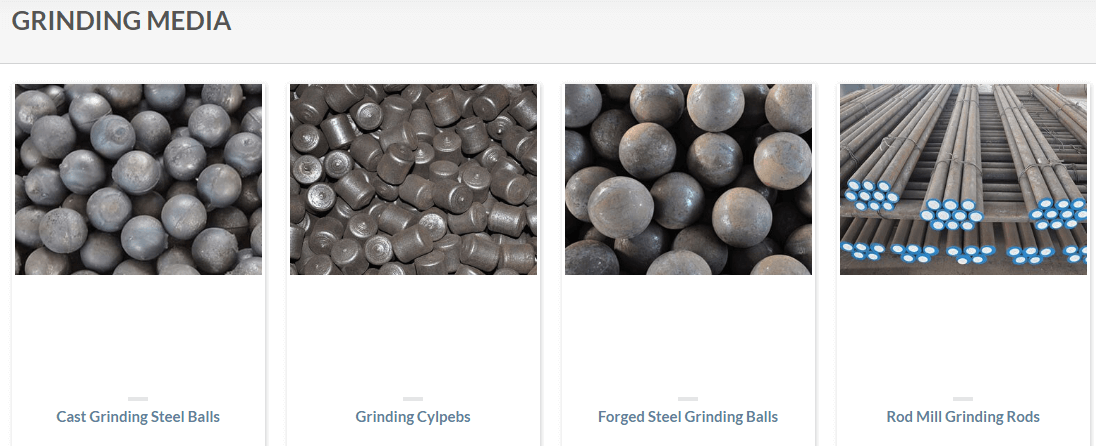
Many shapes of grinding media have been tried over the past years, but essentially there are only two efficient types of media used. These are the spherical ball and the cylindrical rod. Other shapes are relatively expensive to manufacture and they have shown no appreciable improvement in grinding characteristics.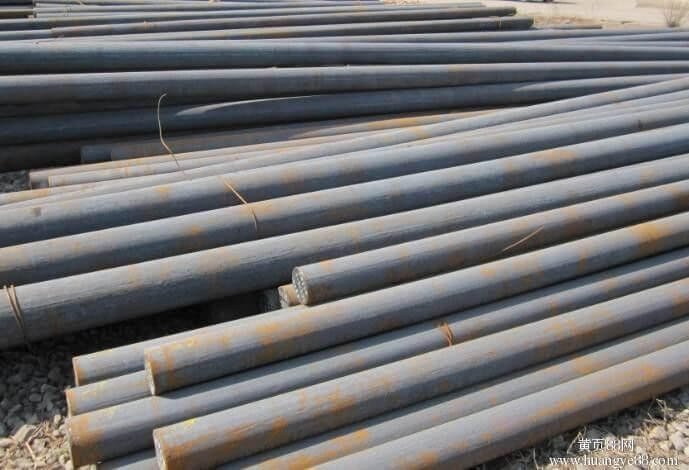
It will be found that a seasoned charge will provide a better grind than a new mill charge. This, of course, is impossible to determine at the offset, but after continuous operation the media charge should be checked for size and weight, and maintained at that optimum point. After the charge has been selected, replacement media should be made at the maximum size used. In some cases it has been found advantageous to add replacement media of two or more sizes, so as to maintain more closely the seasoned ratio.
The original charge to a mill is generally between 40% and 50% of mill volume for ball mills and 35% to 45% mill volume for rod mills.
As a general figure rod mills will have a void space within the charge of around 20% to 22% for new rods. In ball mills the theoretical void space is around 42% to 43%. It has been found that as grinding rods wear a 4″ or 4½” rod will generally break up at about 1½” diameter. The smaller diameter new rods do not break up as easily and will generally wear down to about 1″. In many applications it has been found, that grinding efficiency will increase if rods are removed when they reach the 1″ size, and also if broken pieces of rods are removed. The Open End Rod Mill has the advantage of allowing the quick and easy removal of such rods.
It is difficult to give figures on media consumption since there are so many variables. Rods will be consumed at the rate of 0.2# per ton on soft easily ground material up to 2# per ton on harder material. Steel consumption of balls is spread out over an even greater range. Some indication as to media consumption can be obtained from power consumed in grinding. For example, balls or rods will generally wear at a rate of about 1# for each 6 or 7 kilowatt hours consumed per ton of ore. Liner consumption is generally about one-fifth of the media consumption.
GRINDING RODS

Steel Grinding Rods
We are prepared to furnish all types and sizes of steel rods as shown in table. Standard sizes of these rods are finest quality, high carbon, hot rolled, machine straightened steel and meet low cost, long wear requirements for use in operation of all types of rod mills.
Steel Grinding Rods are made of a special steel which breaks up without twisting when final wear occurs. This is extremely important in maintaining full grinding capacity and eliminating the difficulty of removing wire-like, worn rods which twist and bend into an inseparable and space filling mass of interlaced wires if breaking does not occur. Rods are shipped in lengths cut to suit the length of each particular customer’s rod mill.
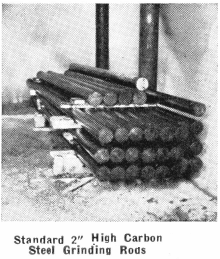
Rod Mill Rod Weights
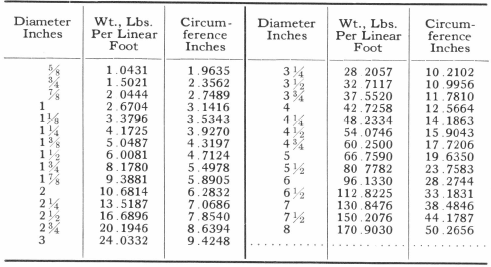
FORGED STEEL GRINDING BALLS
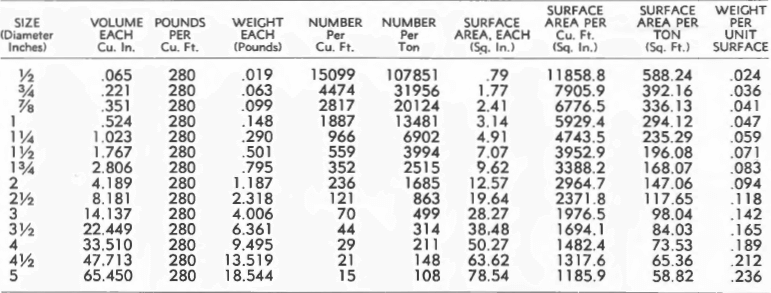
EXAMPLE: Require Initial Ball Charge of 18000# using 2½”, 3″, 3½” and 4″ balls.

We recommend grinding rods having the following approximate chemical compositions and specifications:
Carbon .85- 1.00%
Manganese .60 – .90
Sulphur .05 Max.
Phosphorous .04 Max.
Silicon .10 Max.
Rods are to be hot rolled, hot sawed or sheared, with standard tolerance and machine straightened.
We have found that a good grade of forged steel grinding balls is generally most efficient for use with our grate discharge ball mills.
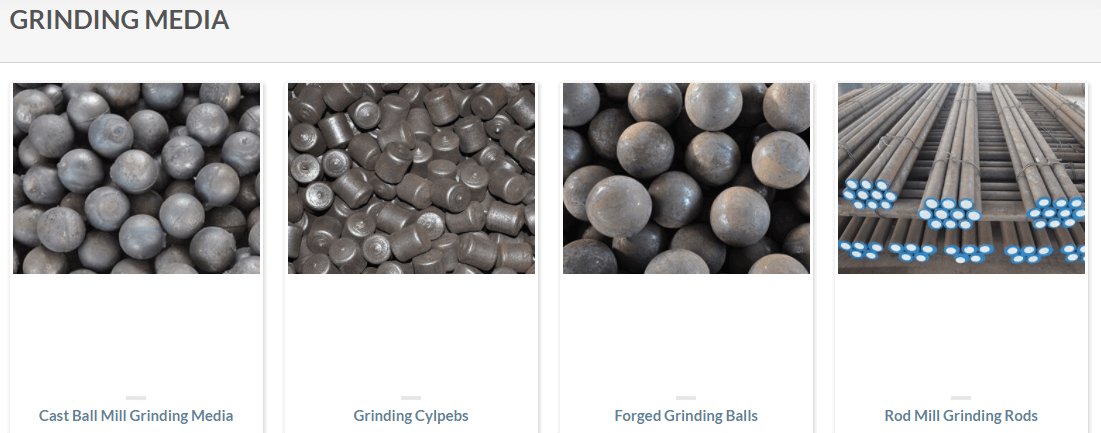
Grinding Balls
Steel balls ranging from ¾ to 5 in. in diameter are used. Rods range from 1½ to 4 in. in diameter and should be 3 to 4 in. shorter than the inside mill length. Tube mills are usually fed balls smaller than 2 in., whereas 4- or 5-in. balls are more commonly used for ball-mill grinding. A much higher grinding capacity is obtained in tube mills by using steel media instead of pebbles, but in making such a conversion serious consideration must be given to the ability of the steel shell to withstand the greater loading.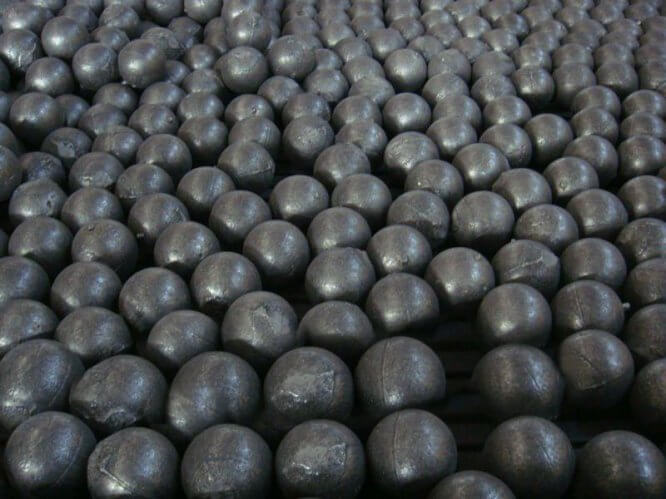
Approximate ball loads can be estimated by assuming 300 lb. per cu. ft. of ball volume and a total load equivalent to 40 to 45 per cent of the mill volume. Rod loads average about 40 per cent of mill volume, and a figure of 400 to 425 lb. per cu. ft. of rod volume should be taken.
A comprehensive discussion of the theory and practice of wet grinding is to be found in Taggart’s Handbook of Mineral Dressing, Sec. 5. The following excerpts from this work are of interest.
Experience indicates that rods are superior to balls for feeds in the range from ½ to 1 in. maximum when the mill is not called upon to finish at sizes finer than 14 mesh. Balls are superior at coarser feed sizes or for finishing 1-in. feeds to 28 mesh of grind or finer because the mill can be run cataracting and the large lumps broken by hammering.
In an operating mill a seasoned charge, containing media of all sizes from that of the renewal or replacement size down to that which discharges automatic ally, normally produces better grinding than a new charge. It is inferred from this that a charge should be rationed to the mill feed, i.e., that it should contain media of sizes best suited to each of the particle sizes to be ground. Usual practice is, however, to charge a new mill with a range of sizes, based on an assumed seasoned load; thereupon to make periodic renewals, at various sizes dependent upon the character of the circulating load, until optimum grinding is obtained; and thereafter to make required renewals at the optimum size.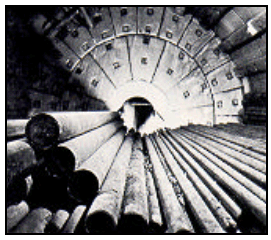
A coarse feed requires larger (grinding) media than a finer feed. The smaller the mesh of grind the smaller the optimum diameter of the medium. This relationship is attributed to the fact that fine product is produced most effectively by rubbing, whence maximum capacity to fine sizes is attained by maximum rubbing surface, i.e., with small balls. A practical limitation is imposed by the tendency for balls that are too small to “float’* out of the mill and by the high percentage of rejects when renewals are too small.
The usual materials for balls are chilled cast iron and forged steel, for rods, high- carbon steel, (0.8 to 1.0 per cent carbon) all more or less alloyed. Mild steel rods are unsuitable for the reason that they bend and kink after wearing down to a certain minimum diameter and snarl up the whole rod load. The hardened steel rods break up when they wear down and are removed at about 1 in. or left in an eventually discharge in small pieces.
Grinding Media Prices Estimator
If you know the price of a 3″ grinding ball or what the cost of a 75mm piece of grinding ball is, you can estimate, in a relative way, the price of larger and smaller grinding media. It will serve you well when creating an operating budget.
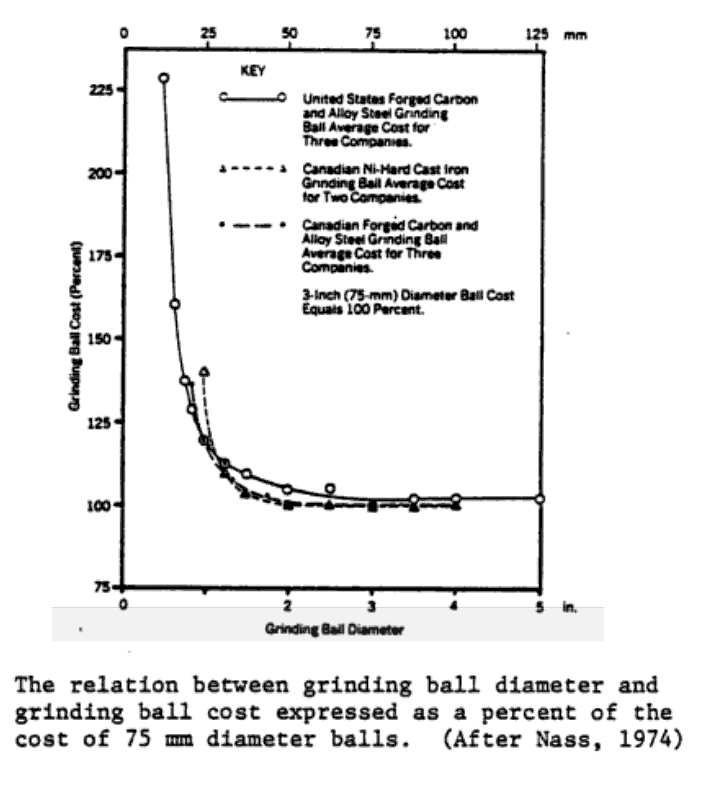
Comminution and Energy Consumption: By National Research Council (U.S.). Committee on Comminution and Energy Consumption
GRINDING BALLS
Grinding Balls are forged from the best high-carbon manganese steel and are non-breakable. These balls are of the very highest quality that can be produced, and give long, satisfactory service.
Cast Alloy Steel Balls are lower in price than the forged type and where freight and haulage are not factors, they are often more desirable.
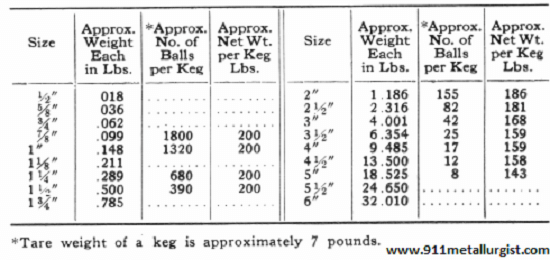
BALLS, Payne Grinding
These balls are cast alloy steel, and are made by the newly developed Payne “Hot Top” principle. This principle employs a rotating casting machine. This machine rotates and the molds move under the pouring spout and hot metal runs down a trough on top of the molds. Four or five molds are either filling or cooling under this stream of hot steel. By this means the heads are kept liquid, eliminating the need for risers and allowing all of the gasses to escape. For this reason the balls are solid, free from gas cavities, and show wear resistance equal to the best forged steel balls. These balls may be had in two types: a soft ball Brinnell 450+ for large diameter ball mills, and a hard ball Brinnell 600+ for small ball mills. The addition of molybdenum, chromium and manganese provides an excellent microstructure for these grinding balls. Balls are available in 4″, 3½”, 3″, 2½”, and 2″ sizes.
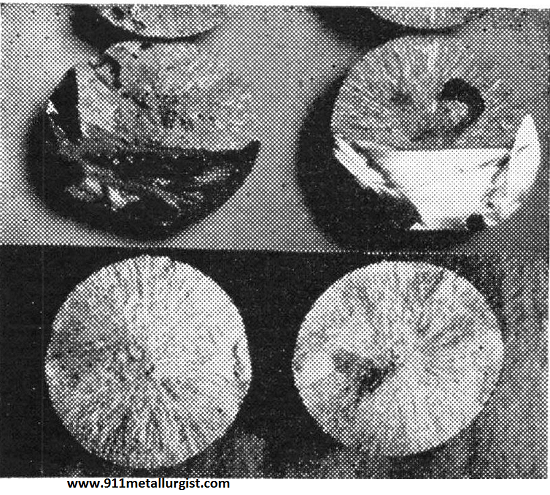 Bottom Photo Shows Improved Grain Structure of Payne Process Balls Compared to Ordinary Cast Iron Balls in Top Photo
Bottom Photo Shows Improved Grain Structure of Payne Process Balls Compared to Ordinary Cast Iron Balls in Top Photo
Source: This article is a reproduction of an excerpt of “In the Public Domain” documents held in 911Metallurgy Corp’s private library.
